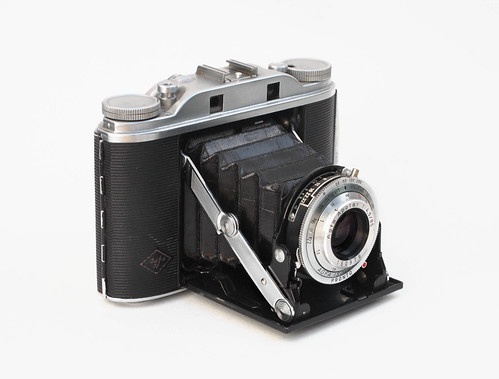 |
| Agfa Isolette III |
Agfa's
Isolette range of 6x6 medium format folding cameras are still very much well-used and well-liked, judging by the numerous references and results among film photographers online, a good sixty years since the models were produced. My own experiences with the Isolette are limited and recent, having bought an Isolette III earlier this year at a
Stockholm flea market for 200SEK, but I had used an Agfa Record I for a number of years, and the Isolette's construction, styling, design and user experience are all very similar to the
Record 6x9 cameras. The Agfa Isolette cameras take 6x6 images, although a couple of the Isolette models had masks for smaller formats. The Isolette III was introduced in 1954, snd is essentially the same camera as the Isolette II with the addition of an uncoupled rangefinder.
The Isolette cameras were provided with lenses of both 75mm and 85mm focal lengths, which are dependent on the lens' widest aperture: f4.5 lenses on the Isolette are 85mm, while f3.5 lenses are 75mm. I've preciously had a couple of medium format cameras in the 6x6 image size with 75mm lenses, a common focal length, but I've sometimes felt it a little too wide on the format. However, it may be worth bearing in mind that the 6x6 format came about with the twin-lens reflex camera, the typical construction of which would not have been conducive to changing the camera's orientation had it shot a rectangular image, and so the square format allowed cropping in either orientation as much as being used full-frame. Using the full, square frame, I find achieving satisfactory compositions require more thought than a common rectangular photographic frame; conversely, it seems a shame to crop the image to do so and not make use of the whole negative's area.
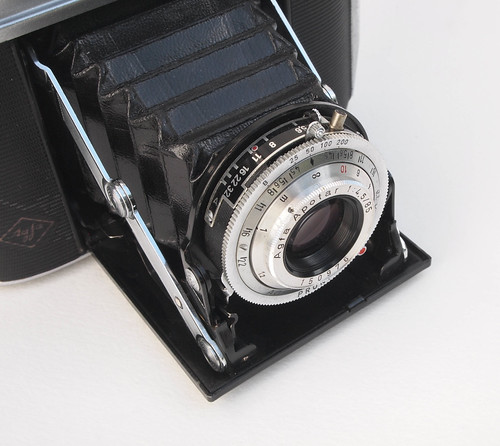 |
| Agfa Isolette III lens and shutter detail |
My model has Agfa's Apotar lens in a Pronto four-speed shutter, both being among the cheaper variants available. The Apotar is a triplet lens, but, being post-war, it is coated. The Apotar was the middle of the range of lenses: the lowest priced lens was the Agnar, the lens that my Record I came with, even so it did provide very good results on modern medium format films. The Isolette has focus below 1 metre, although the 1 metre is the last mark on the focus ring (possibly the lens focusses down to 3ft which would be marked on US - under the Ansco name - or UK export models). The marks at 3m and 10m are picked out in red. The Pronto shutter has four speeds 25th, 50th, 100th, 200th, plus B. The addition of the camera's rangefinder meant that unlike other Isolette models, the III no longer sports a T setting (I personally find shutters with a 'T' setting more useful then a 'B'). Other features mark my Isolette as a later version, from 1956 onwards: there is a film reminder dial on the top left of the camera instead of a depth-of-field calculator, the DOF indications are around the lens instead (the film reminder has old DIN speeds of 23/10 - 21/10 - 17/10 and COL T - COL K - COL NT). Film advance is manual, using a red window on the camera back but it does have a double exposure lock on the shutter release: after exposure a small round window shows red until the film is advanced and the lock disengages. The shutter can still be tripped by the lever around the lens when locked.
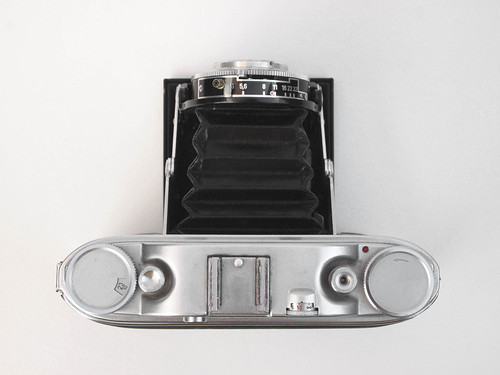 |
| Agfa Isolette III top plate |
The camera had two problems when I bought it: the camera back did not close tight at one side; and the rangefinder wheel was immovable. The first of these problems was solved by using pliers to bend inwards one of two prongs to provide a tighter fit with the camera back's latch (when in Stockholm itself I realised this might be a problem and simply held the back tight when shooting - although on some exposures I wasn't careful enough with this and some show the top right corner of the pressure plate not keeping the film in alignment, falling behind the plane of focus).
 |
| Detail of loose catch |
I didn't have the tools to attempt to fix this or the rangefinder while in Stockholm. However, as the rangefinder is uncoupled, the fact that it was stuck did not interfere with using the camera, it merely meant estimating distances, and paying more attention to the DOF scale around the lens. Despite these issues, I liked using the Isolette III enough to use it while in Stockholm rather than the
Baldalux 6x9 camera I'd brought with me, and shot a number of different films with it, Rollei
RPX 25 and
400, Fomapan 400,
Superpan 200 and some
Kodak Verichrome Pan with a "develop before" date of October 1969.
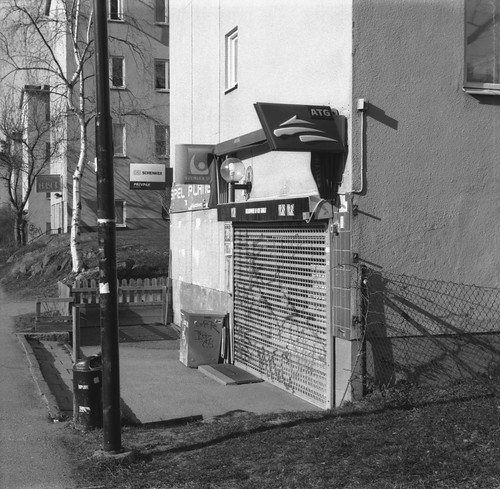 |
| Sample image with Fomapan 400 |
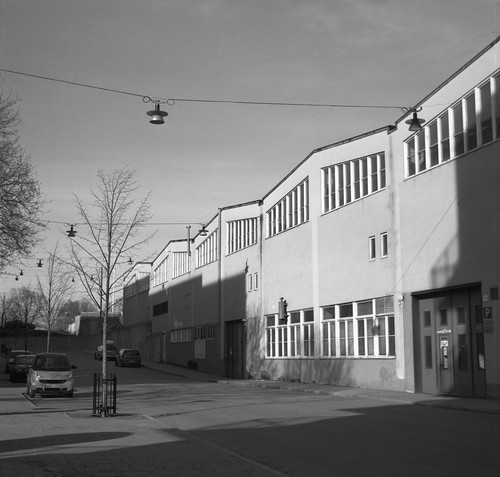 |
| Sample image with Superpan 200 |
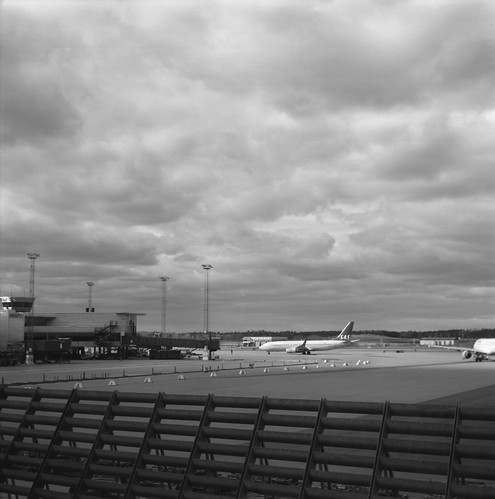 |
| Sample image with Rollei RPX 25 |
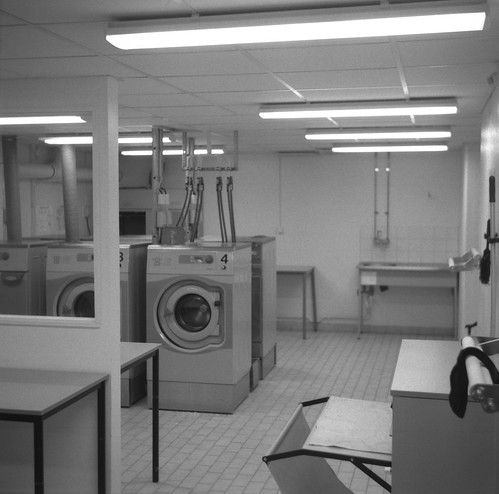 |
| Sample image with Rollei RPX 400 at 1600 |
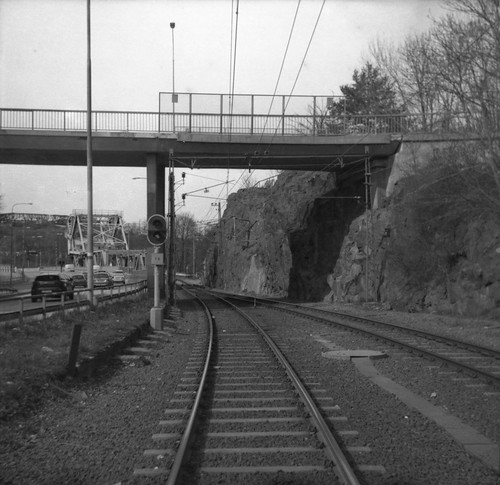 |
| Sample image with Kodak Verichrome Pan, develop before date of 1969 |
Sources/further reading:
Isolette range on Camera-Wiki
Agfa/Ansco Isolettes by Andrew Yue
Isolette cameras on J. Noir's Camera Pages
Isolette III manual (first version)









Nice to see what this camera is capable of, and on very expired film to boot!
ReplyDeleteI got one much like this recently, and the shutter is a little sticky.
The shutter on my camera was a little sticky too when I very first bought it - but it just needed exercise, nothing else - same with the focus, very stiff, but not completely seized, so it loosened up after repeated turning.
ReplyDelete